Abstract
In summary, calcium seems to play a central role in the activation of cells of the immune system. When the cells are stimulated, [Ca2+]i generally increases as a result of entry from the external medium, as well as mobilization of calcium from intracellular membrane-bound compartments. It is generally acknowledged that inositol 1,4,5-trisphosphate mediates the release of calcium from internal stores. By comparison, relatively little is known about the mechanism underlying entry of calcium across the plasma membrane. Currently available evidence seems to rule out the participation of classic voltage-gated channels. Similarly, it appears unlikely that the interaction of ligands with their surface receptors directly activates the channels. Instead, it is more likely that a second messenger produced by the formation of the receptor-ligand complex is responsible for gating the channels. Several mediators, including calcium itself and inositol phosphates, have been proposed to effect gating of the channels, but conclusive evidence is not yet available. Ongoing work is likely to reveal the nature of the putative second messenger(s) in the near future.
Full text
PDF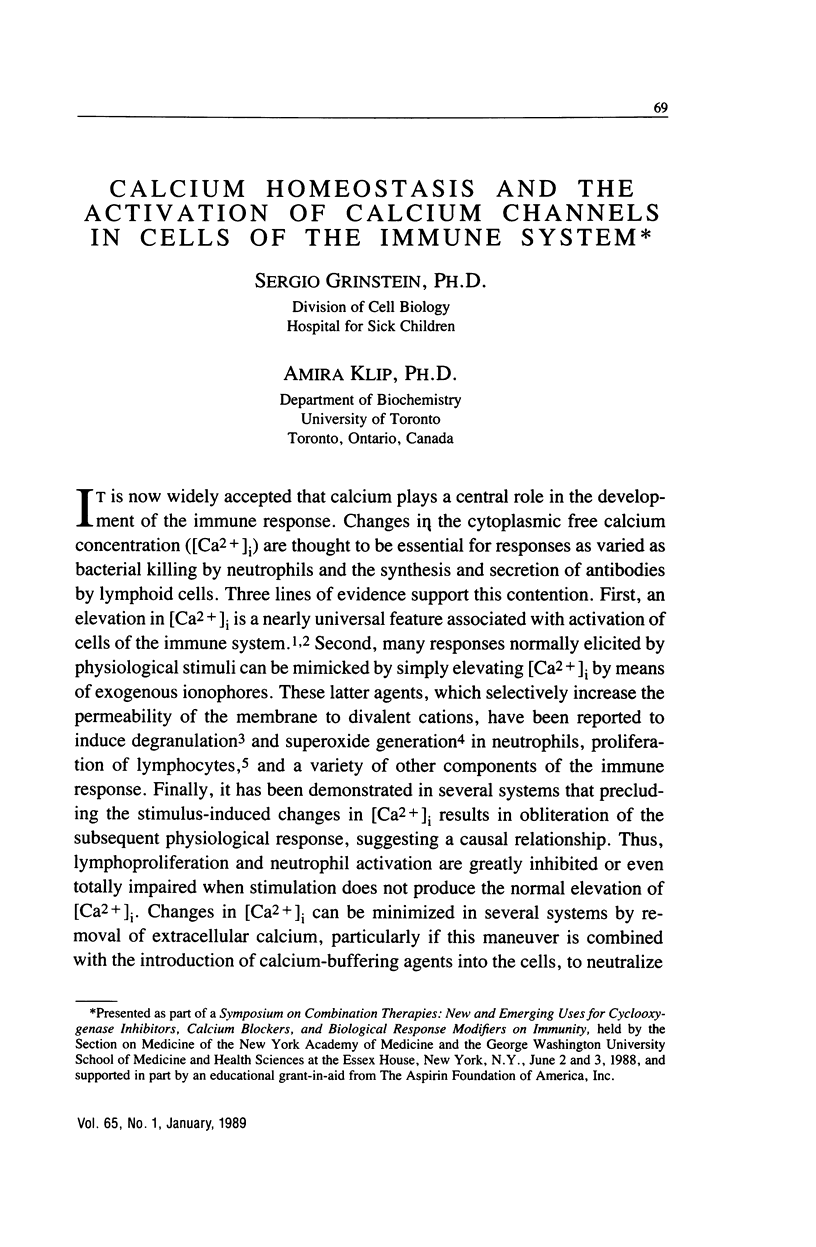
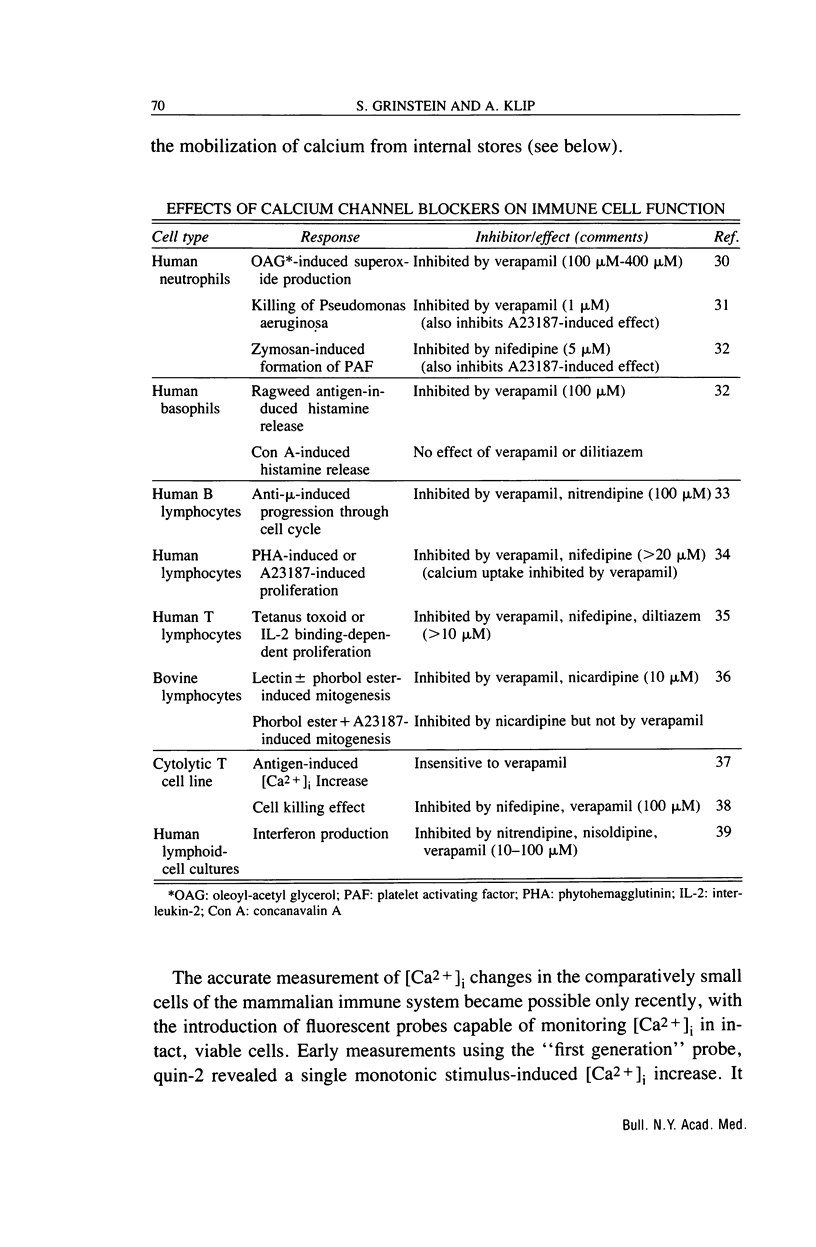
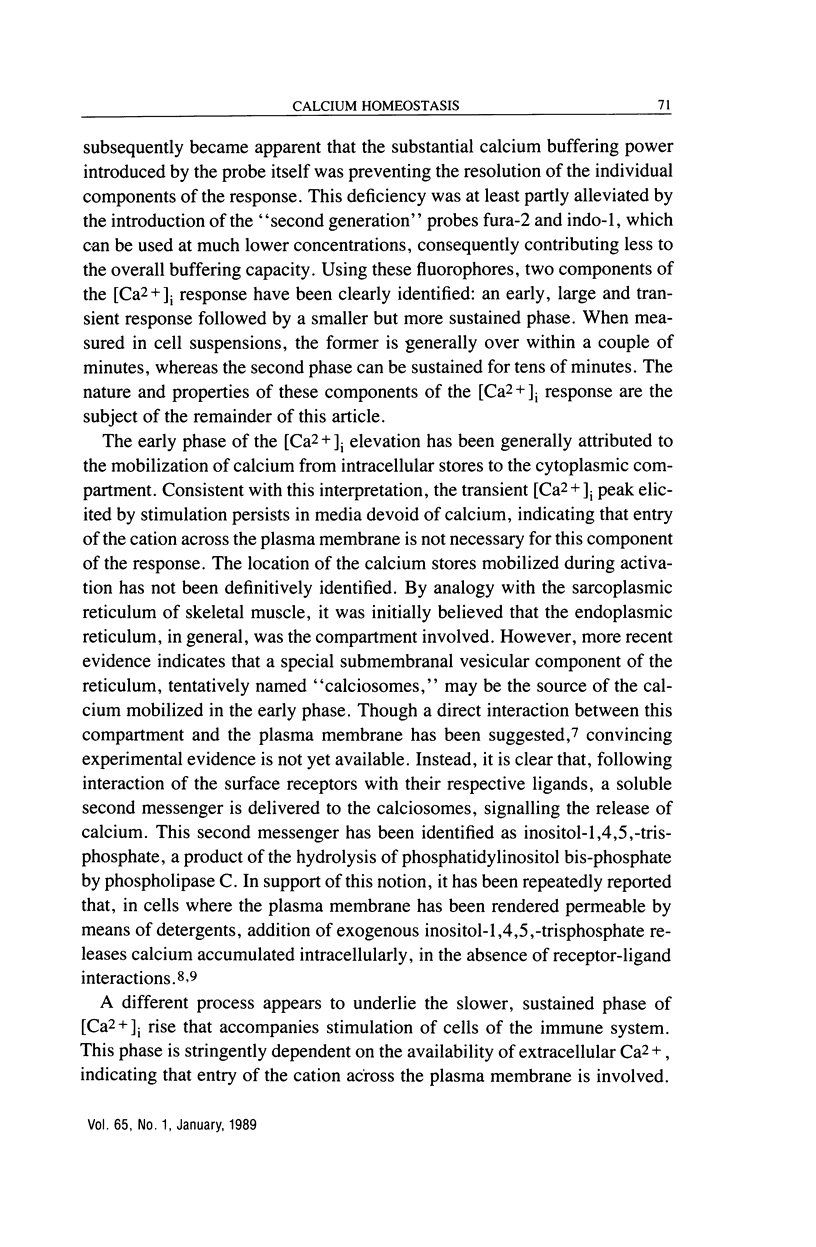
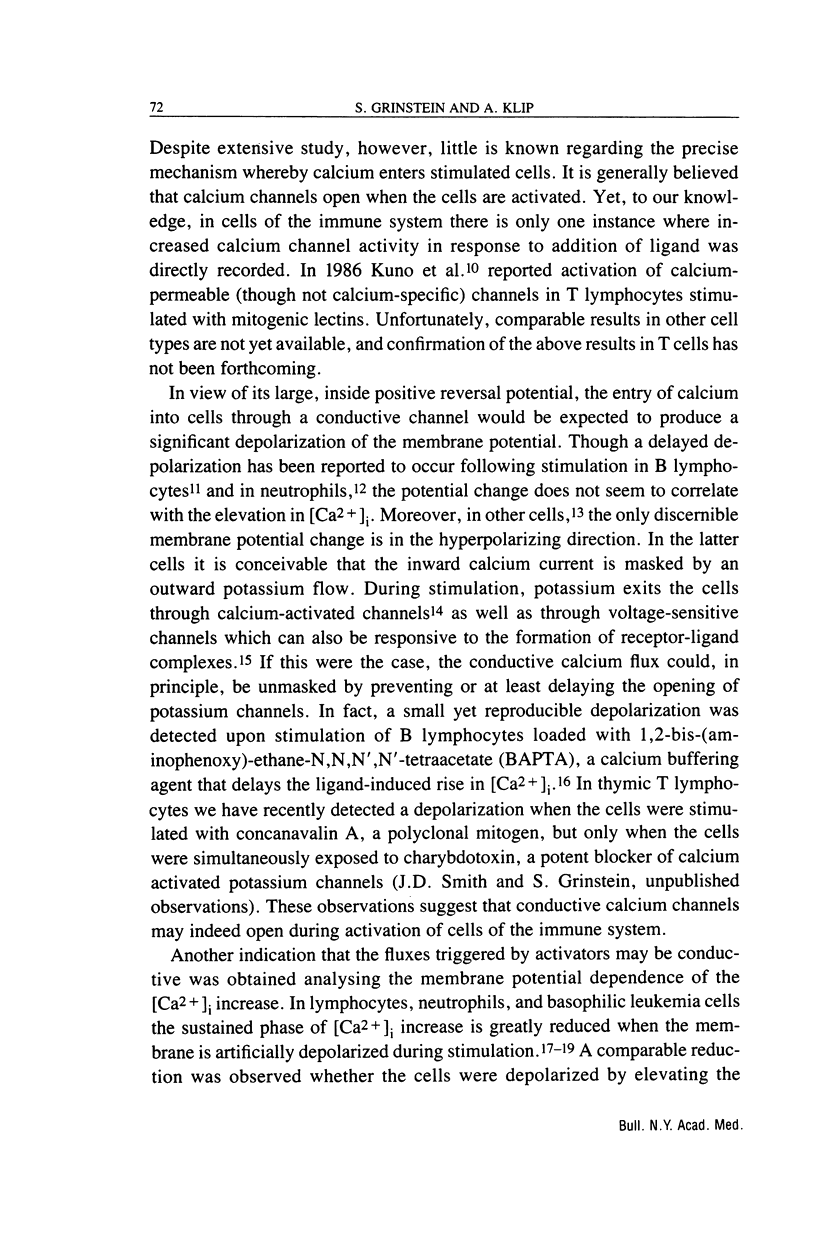
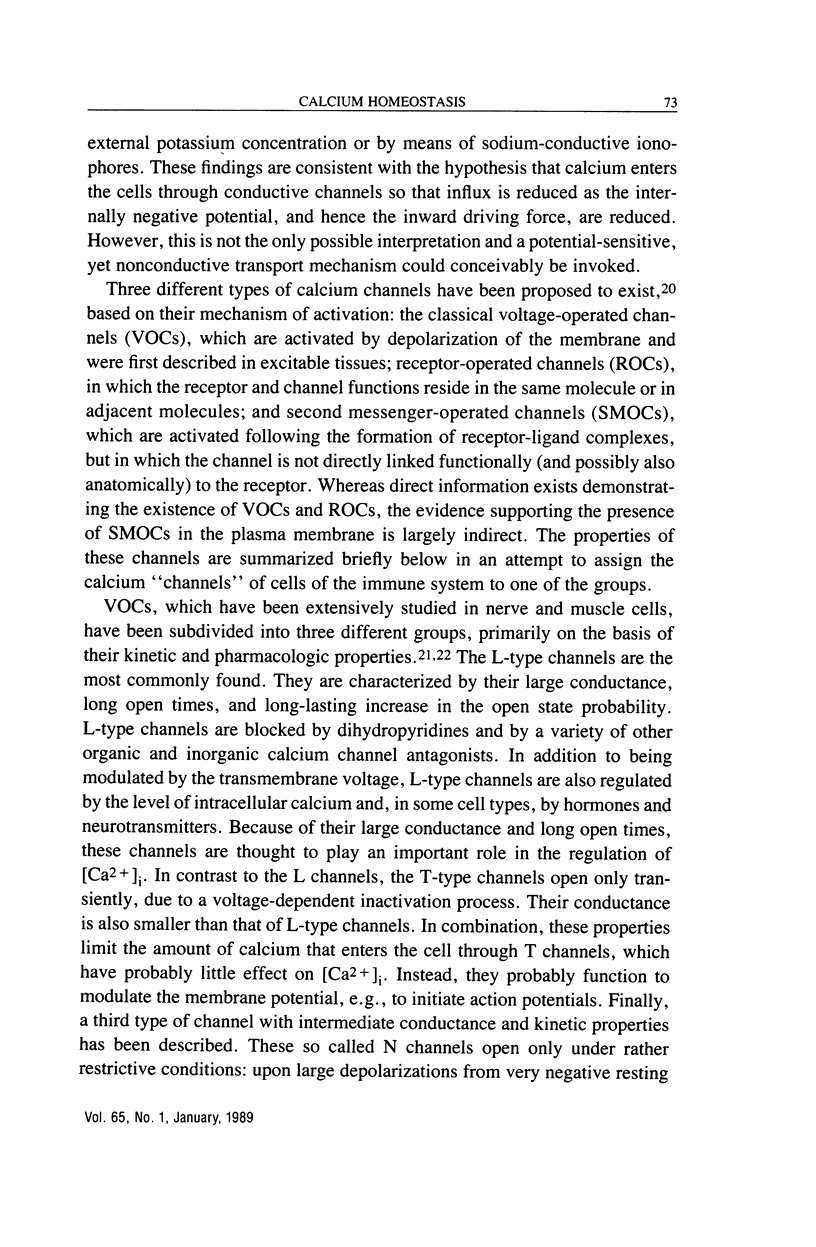
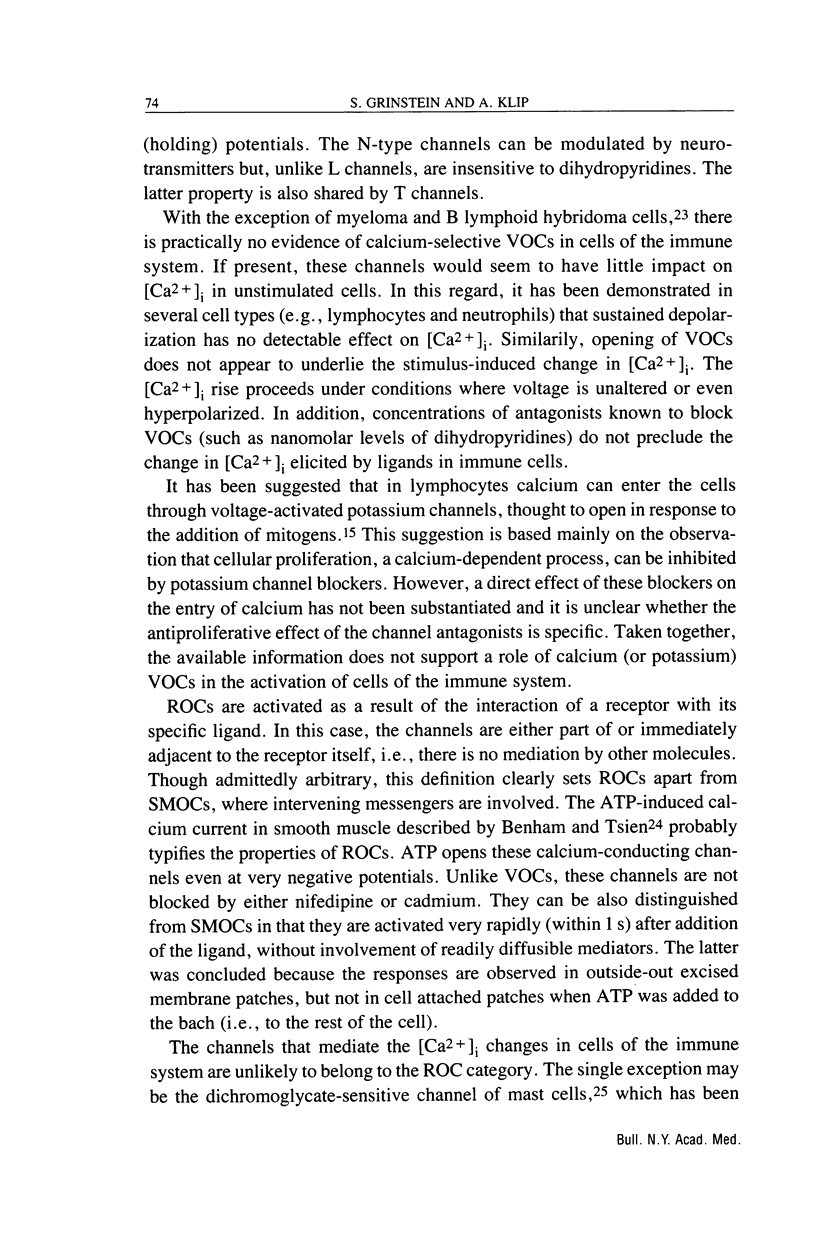
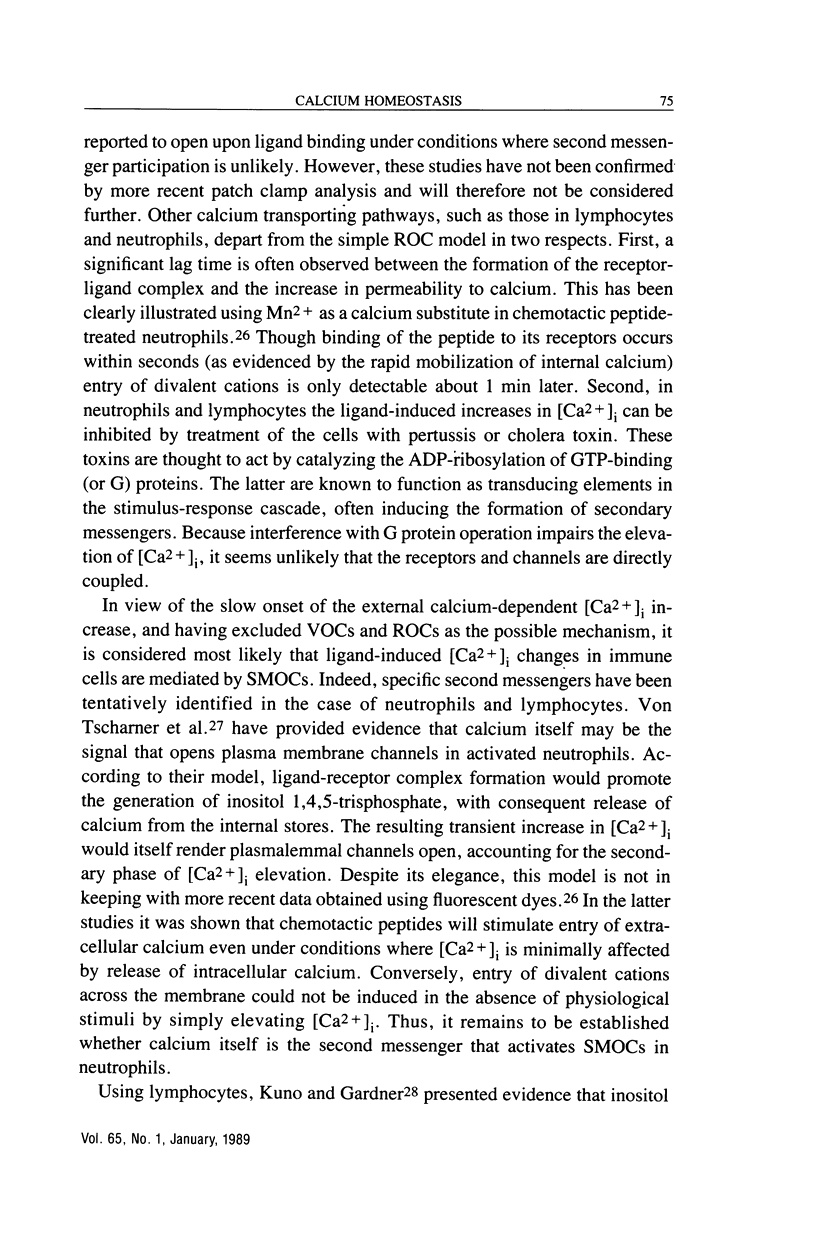
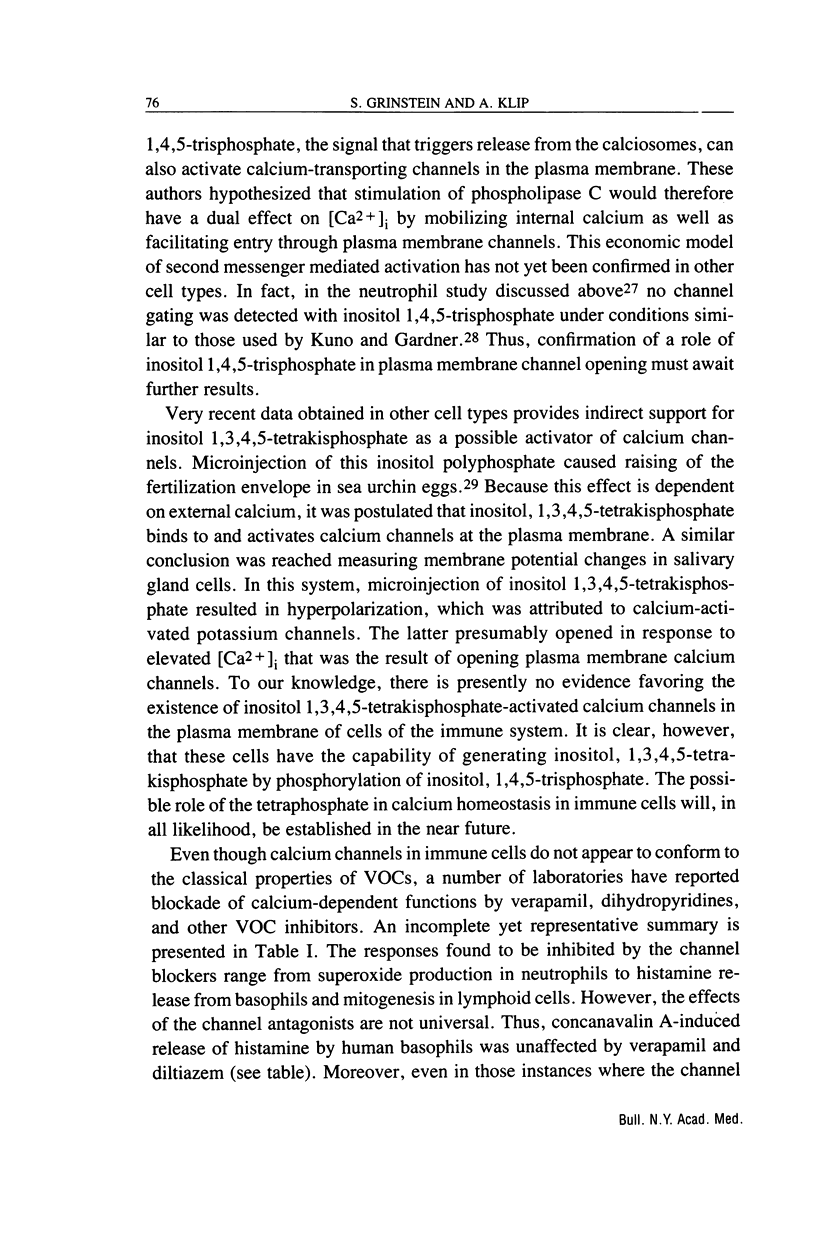
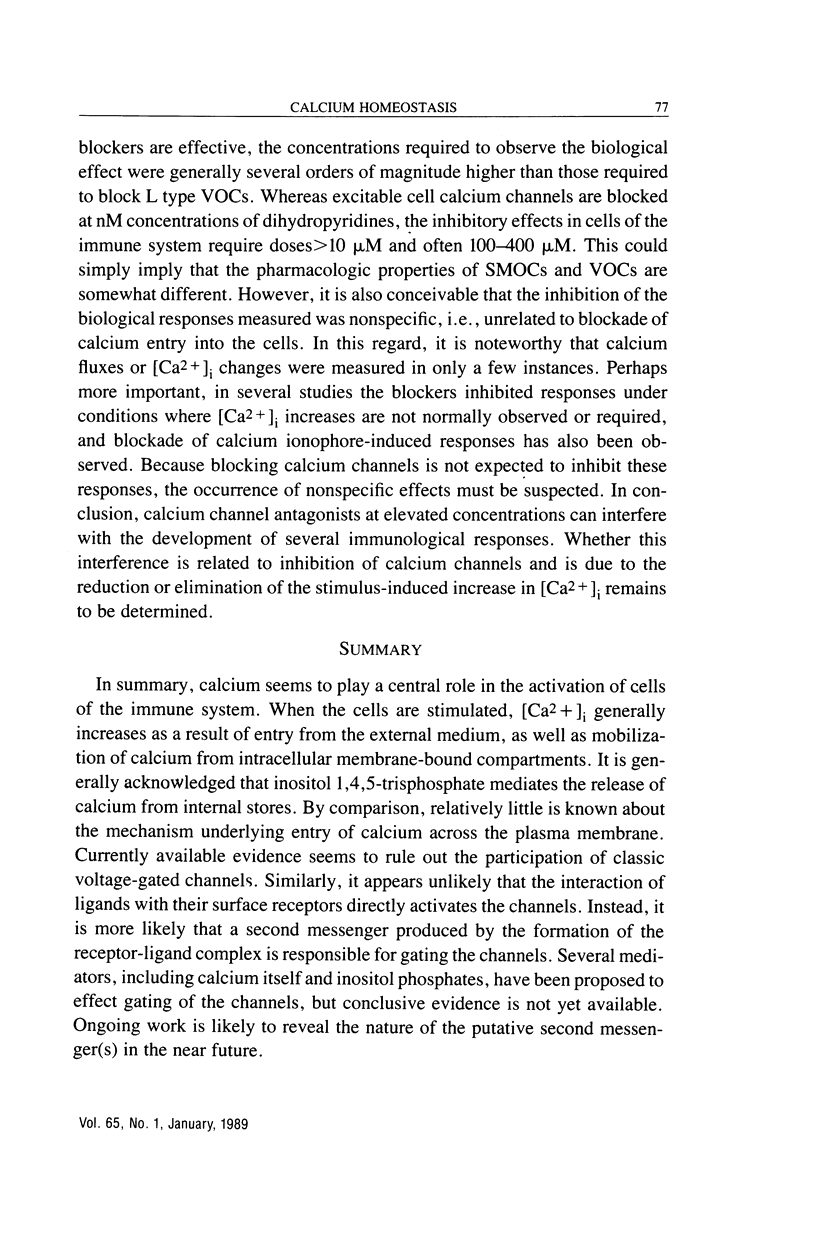
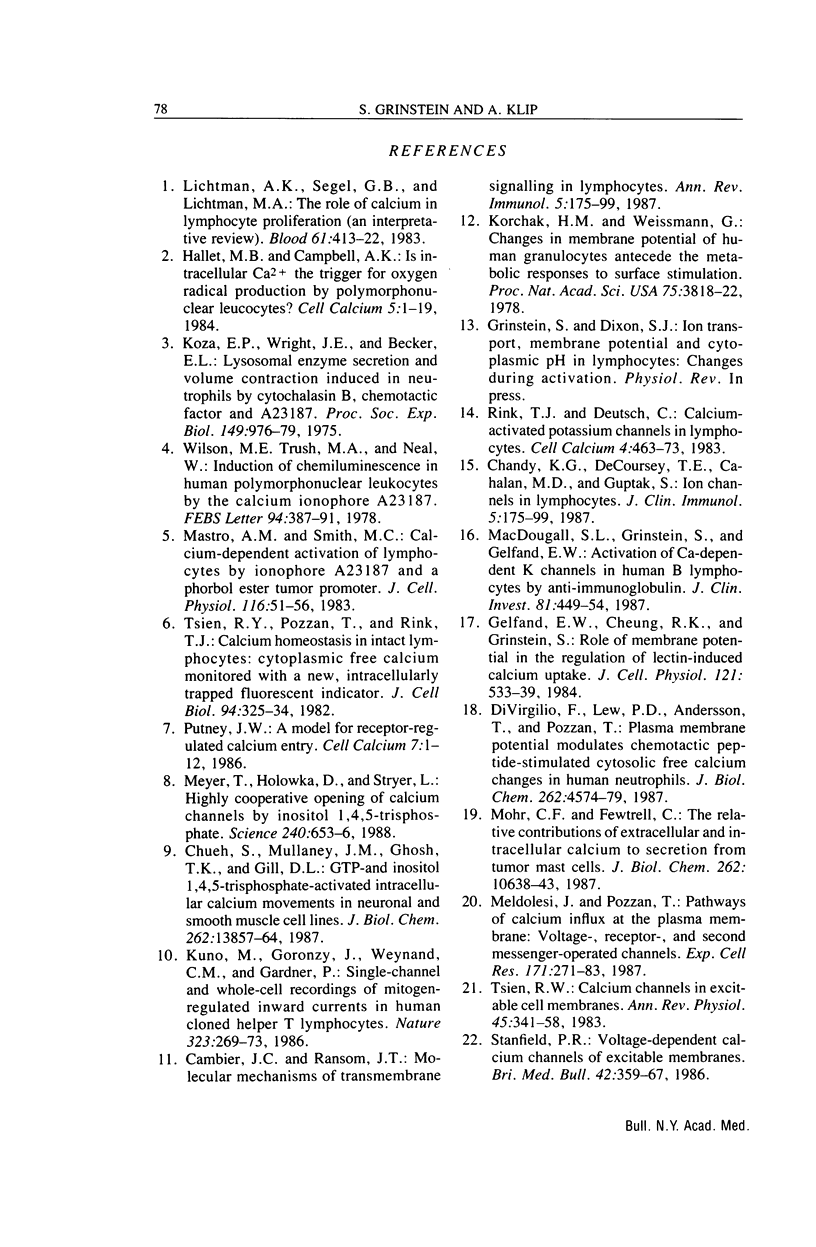
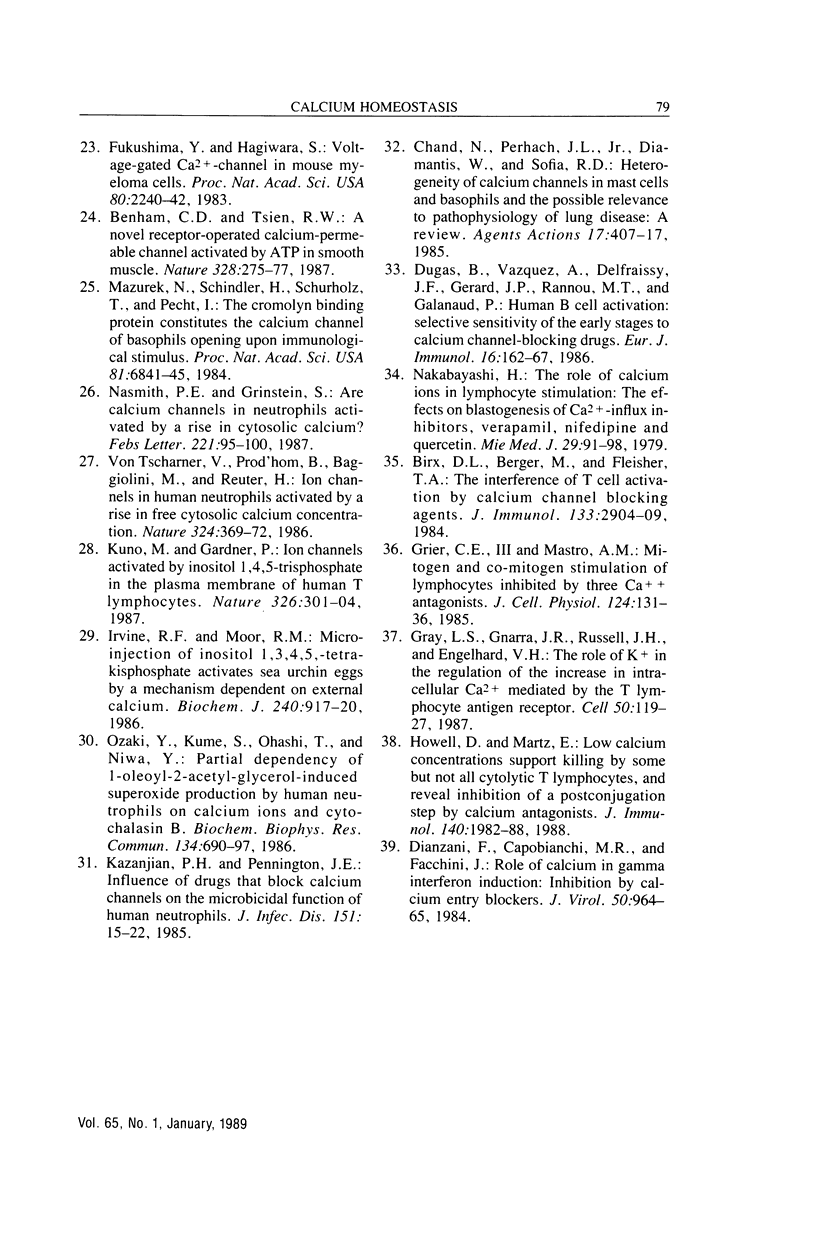
Selected References
These references are in PubMed. This may not be the complete list of references from this article.
- Benham C. D., Tsien R. W. A novel receptor-operated Ca2+-permeable channel activated by ATP in smooth muscle. Nature. 1987 Jul 16;328(6127):275–278. doi: 10.1038/328275a0. [DOI] [PubMed] [Google Scholar]
- Birx D. L., Berger M., Fleisher T. A. The interference of T cell activation by calcium channel blocking agents. J Immunol. 1984 Dec;133(6):2904–2909. [PubMed] [Google Scholar]
- Cambier J. C., Ransom J. T. Molecular mechanisms of transmembrane signaling in B lymphocytes. Annu Rev Immunol. 1987;5:175–199. doi: 10.1146/annurev.iy.05.040187.001135. [DOI] [PubMed] [Google Scholar]
- Chand N., Perhach J. L., Jr, Diamantis W., Sofia R. D. Heterogeneity of calcium channels in mast cells and basophils and the possible relevance to pathophysiology of lung diseases: a review. Agents Actions. 1986 Mar;17(5-6):407–417. doi: 10.1007/BF01965507. [DOI] [PubMed] [Google Scholar]
- Chueh S. H., Mullaney J. M., Ghosh T. K., Zachary A. L., Gill D. L. GTP- and inositol 1,4,5-trisphosphate-activated intracellular calcium movements in neuronal and smooth muscle cell lines. J Biol Chem. 1987 Oct 5;262(28):13857–13864. [PubMed] [Google Scholar]
- Di Virgilio F., Lew P. D., Andersson T., Pozzan T. Plasma membrane potential modulates chemotactic peptide-stimulated cytosolic free Ca2+ changes in human neutrophils. J Biol Chem. 1987 Apr 5;262(10):4574–4579. [PubMed] [Google Scholar]
- Dianzani F., Capobianchi M. R., Facchini J. Role of calcium in gamma interferon induction: inhibition by calcium entry blockers. J Virol. 1984 Jun;50(3):964–965. doi: 10.1128/jvi.50.3.964-965.1984. [DOI] [PMC free article] [PubMed] [Google Scholar]
- Dugas B., Vazquez A., Delfraissy J. F., Gérard J. P., Rannou M. T., Galanaud P. Human B cell activation: selective sensitivity of the early stages to calcium channel-blocking drugs. Eur J Immunol. 1986 Feb;16(2):162–167. doi: 10.1002/eji.1830160210. [DOI] [PubMed] [Google Scholar]
- Fukushima Y., Hagiwara S. Voltage-gated Ca2+ channel in mouse myeloma cells. Proc Natl Acad Sci U S A. 1983 Apr;80(8):2240–2242. doi: 10.1073/pnas.80.8.2240. [DOI] [PMC free article] [PubMed] [Google Scholar]
- Gelfand E. W., Cheung R. K., Grinstein S. Role of membrane potential in the regulation of lectin-induced calcium uptake. J Cell Physiol. 1984 Dec;121(3):533–539. doi: 10.1002/jcp.1041210312. [DOI] [PubMed] [Google Scholar]
- Gray L. S., Gnarra J. R., Russell J. H., Engelhard V. H. The role of K+ in the regulation of the increase in intracellular Ca2+ mediated by the T lymphocyte antigen receptor. Cell. 1987 Jul 3;50(1):119–127. doi: 10.1016/0092-8674(87)90668-4. [DOI] [PubMed] [Google Scholar]
- Grier C. E., 3rd, Mastro A. M. Mitogen and co-mitogen stimulation of lymphocytes inhibited by three Ca++ antagonists. J Cell Physiol. 1985 Jul;124(1):131–136. doi: 10.1002/jcp.1041240121. [DOI] [PubMed] [Google Scholar]
- Hallett M. B., Campbell A. K. Is intracellular Ca2+ the trigger for oxygen radical production by polymorphonuclear leucocytes? Cell Calcium. 1984 Feb;5(1):1–19. doi: 10.1016/0143-4160(84)90150-7. [DOI] [PubMed] [Google Scholar]
- Howell D. M., Martz E. Low calcium concentrations support killing by some but not all cytolytic T lymphocytes, and reveal inhibition of a postconjugation step by calcium antagonists. J Immunol. 1988 Mar 15;140(6):1982–1988. [PubMed] [Google Scholar]
- Irvine R. F., Moor R. M. Micro-injection of inositol 1,3,4,5-tetrakisphosphate activates sea urchin eggs by a mechanism dependent on external Ca2+. Biochem J. 1986 Dec 15;240(3):917–920. doi: 10.1042/bj2400917. [DOI] [PMC free article] [PubMed] [Google Scholar]
- Kazanjian P. H., Pennington J. E. Influence of drugs that block calcium channels on the microbicidal function of human neutrophils. J Infect Dis. 1985 Jan;151(1):15–22. doi: 10.1093/infdis/151.1.15. [DOI] [PubMed] [Google Scholar]
- Korchak H. M., Weissmann G. Changes in membrane potential of human granulocytes antecede the metabolic responses to surface stimulation. Proc Natl Acad Sci U S A. 1978 Aug;75(8):3818–3822. doi: 10.1073/pnas.75.8.3818. [DOI] [PMC free article] [PubMed] [Google Scholar]
- Kuno M., Gardner P. Ion channels activated by inositol 1,4,5-trisphosphate in plasma membrane of human T-lymphocytes. Nature. 1987 Mar 19;326(6110):301–304. doi: 10.1038/326301a0. [DOI] [PubMed] [Google Scholar]
- Kuno M., Goronzy J., Weyand C. M., Gardner P. Single-channel and whole-cell recordings of mitogen-regulated inward currents in human cloned helper T lymphocytes. Nature. 1986 Sep 18;323(6085):269–273. doi: 10.1038/323269a0. [DOI] [PubMed] [Google Scholar]
- Lichtman A. H., Segel G. B., Lichtman M. A. The role of calcium in lymphocyte proliferation. (An interpretive review). Blood. 1983 Mar;61(3):413–422. [PubMed] [Google Scholar]
- MacDougall S. L., Grinstein S., Gelfand E. W. Activation of Ca2+-dependent K+ channels in human B lymphocytes by anti-immunoglobulin. J Clin Invest. 1988 Feb;81(2):449–454. doi: 10.1172/JCI113340. [DOI] [PMC free article] [PubMed] [Google Scholar]
- Mastro A. M., Smith M. C. Calcium-dependent activation of lymphocytes by ionophore, A23187, and a phorbol ester tumor promoter. J Cell Physiol. 1983 Jul;116(1):51–56. doi: 10.1002/jcp.1041160109. [DOI] [PubMed] [Google Scholar]
- Mazurek N., Schindler H., Schürholz T., Pecht I. The cromolyn binding protein constitutes the Ca2+ channel of basophils opening upon immunological stimulus. Proc Natl Acad Sci U S A. 1984 Nov;81(21):6841–6845. doi: 10.1073/pnas.81.21.6841. [DOI] [PMC free article] [PubMed] [Google Scholar]
- Meldolesi J., Pozzan T. Pathways of Ca2+ influx at the plasma membrane: voltage-, receptor-, and second messenger-operated channels. Exp Cell Res. 1987 Aug;171(2):271–283. doi: 10.1016/0014-4827(87)90161-3. [DOI] [PubMed] [Google Scholar]
- Meyer T., Holowka D., Stryer L. Highly cooperative opening of calcium channels by inositol 1,4,5-trisphosphate. Science. 1988 Apr 29;240(4852):653–656. doi: 10.1126/science.2452482. [DOI] [PubMed] [Google Scholar]
- Mohr F. C., Fewtrell C. The relative contributions of extracellular and intracellular calcium to secretion from tumor mast cells. Multiple effects of the proton ionophore carbonyl cyanide m-chlorophenylhydrazone. J Biol Chem. 1987 Aug 5;262(22):10638–10643. [PubMed] [Google Scholar]
- Nasmith P. E., Grinstein S. Are Ca2+ channels in neutrophils activated by a rise in cytosolic free Ca2+? FEBS Lett. 1987 Aug 31;221(1):95–100. doi: 10.1016/0014-5793(87)80359-9. [DOI] [PubMed] [Google Scholar]
- Ozaki Y., Kume S., Ohashi T., Niwa Y. Partial dependency of 1-oleoyl-2-acetyl-glycerol-induced superoxide production by human neutrophils on calcium ions and cytochalasin B. Biochem Biophys Res Commun. 1986 Jan 29;134(2):690–697. doi: 10.1016/s0006-291x(86)80475-2. [DOI] [PubMed] [Google Scholar]
- Putney J. W., Jr A model for receptor-regulated calcium entry. Cell Calcium. 1986 Feb;7(1):1–12. doi: 10.1016/0143-4160(86)90026-6. [DOI] [PubMed] [Google Scholar]
- Rink T. J., Deutsch C. Calcium-activated potassium channels in lymphocytes. Cell Calcium. 1983 Dec;4(5-6):463–473. doi: 10.1016/0143-4160(83)90022-2. [DOI] [PubMed] [Google Scholar]
- Stanfield P. R. Voltage-dependent calcium channels of excitable membranes. Br Med Bull. 1986 Oct;42(4):359–367. doi: 10.1093/oxfordjournals.bmb.a072153. [DOI] [PubMed] [Google Scholar]
- Tsien R. W. Calcium channels in excitable cell membranes. Annu Rev Physiol. 1983;45:341–358. doi: 10.1146/annurev.ph.45.030183.002013. [DOI] [PubMed] [Google Scholar]
- Tsien R. Y., Pozzan T., Rink T. J. Calcium homeostasis in intact lymphocytes: cytoplasmic free calcium monitored with a new, intracellularly trapped fluorescent indicator. J Cell Biol. 1982 Aug;94(2):325–334. doi: 10.1083/jcb.94.2.325. [DOI] [PMC free article] [PubMed] [Google Scholar]
- Wilson M. E., Trush M. A., van Dyke K., Neal W. Induction of chemiluminescence in human polymorphonuclear leukocytes by the calcium ionophore A23187. FEBS Lett. 1978 Oct 15;94(2):387–390. doi: 10.1016/0014-5793(78)80984-3. [DOI] [PubMed] [Google Scholar]
- von Tscharner V., Prod'hom B., Baggiolini M., Reuter H. Ion channels in human neutrophils activated by a rise in free cytosolic calcium concentration. 1986 Nov 27-Dec 3Nature. 324(6095):369–372. doi: 10.1038/324369a0. [DOI] [PubMed] [Google Scholar]


